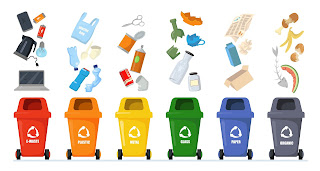New Recycling Trends Redefining Waste in a Circular World
Recycling is evolving—and fast. As global concerns over climate change, resource scarcity, and overflowing landfills intensify, industries are stepping up with more innovative and adaptive waste management solutions. These new recycling trends go beyond simply separating glass from plastic. They signal a shift toward smarter systems, closed-loop thinking, and long-term environmental impact.
From Linear to Circular: A Fundamental Shift
Traditional recycling has often followed a linear path—produce, consume, dispose. But modern approaches are embracing circularity, where materials are continuously reused, remade, and reintegrated into production cycles. This circular economy model minimizes waste and extracts maximum value from every resource.
Manufacturers are designing products with recycling in mind: simplifying materials, avoiding toxic additives, and creating items that can be more easily disassembled and reprocessed. This upstream thinking is essential for reducing downstream waste.
Modular Recycling Facilities and Localized Solutions
Decentralized, modular recycling plants are gaining traction. Instead of relying solely on large-scale facilities located far from population centers, smaller localized hubs are being introduced. These modular units can handle specific types of waste—such as plastics, textiles, or organics—and are designed to operate with low energy consumption and minimal staffing.
This trend allows for faster processing, lower transportation costs, and tailored solutions for regional needs. It also helps communities build resilience by taking control of their own recycling challenges.
Textile and Apparel Waste in Focus
Textile waste is one of the fastest-growing waste streams globally, particularly due to fast fashion and short product lifecycles. In response, several new recycling trends are emerging in the apparel sector, including fiber-to-fiber recycling, enzymatic fabric breakdown, and hybrid methods for processing blended materials.
Retailers and brands are introducing take-back programs, repair workshops, and resell platforms—all designed to reduce landfill-bound garments. The goal is to keep textiles in circulation longer and reduce the environmental burden of clothing production.
Digital Product Passports
Another cutting-edge trend is the rise of digital product passports—scannable tags or QR codes embedded in packaging or clothing. These digital IDs store key information such as material composition, care instructions, and end-of-life options. Consumers can scan the code to understand how and where to recycle the item properly.
For brands, digital product passports also improve traceability, ensure compliance with regulations, and boost transparency in supply chains.
Consumer Awareness Meets Corporate Accountability
As consumers demand more transparency and environmental responsibility, companies are under pressure to rethink how they manage their waste, especially branded materials. Branded items like uniforms, promotional merchandise, and event swag can’t always be resold or donated easily, making sustainable disposal complex.
SwagCycle steps in here, offering businesses a way to stay aligned with new recycling trends while protecting brand reputation. Whether through secure textile recycling, donation to vetted nonprofits, or upcycling initiatives, SwagCycle provides circular solutions for branded merchandise. Their work helps keep waste out of landfills and materials in use—driving sustainability forward with every item they divert.




Comments
Post a Comment